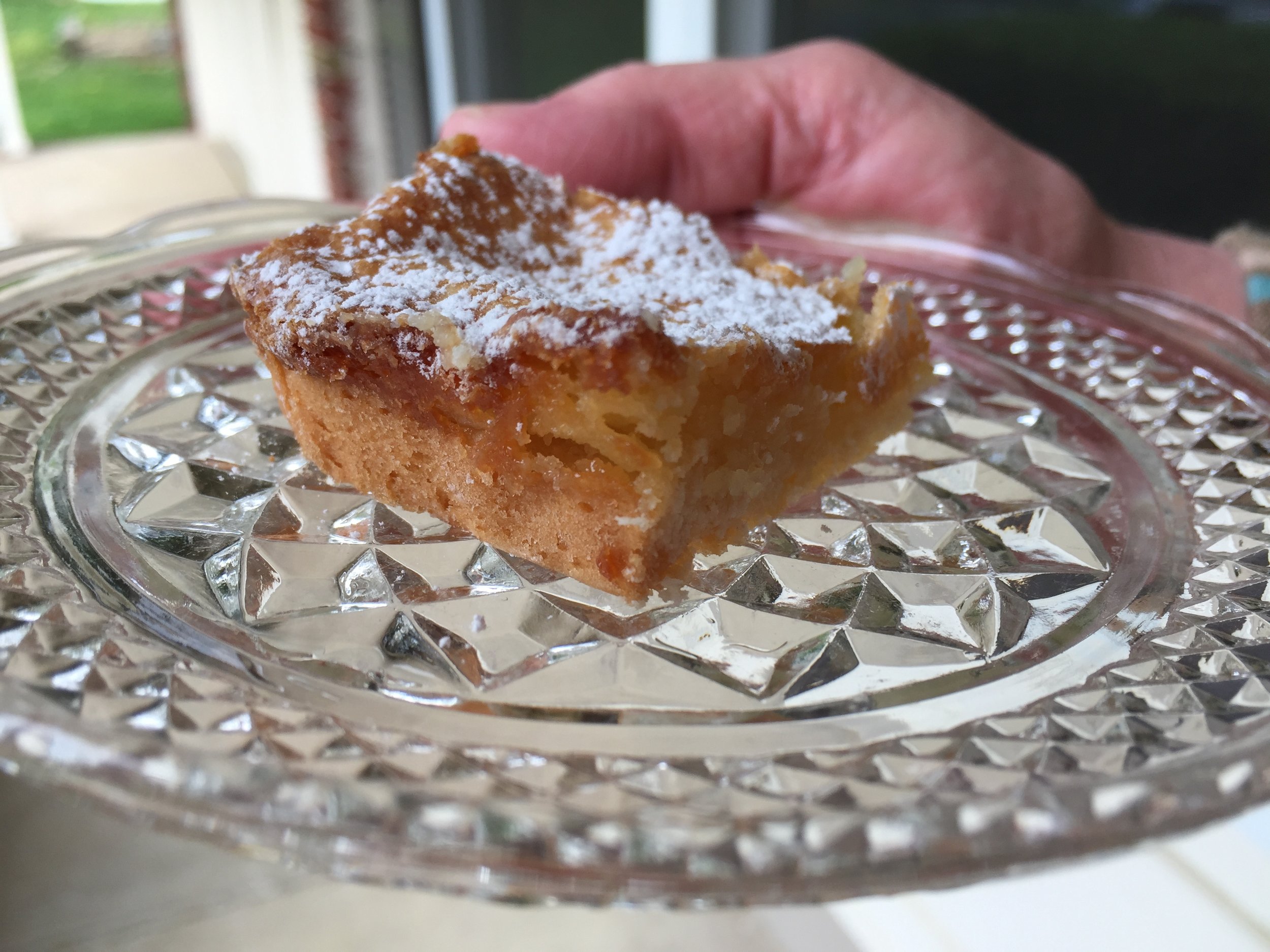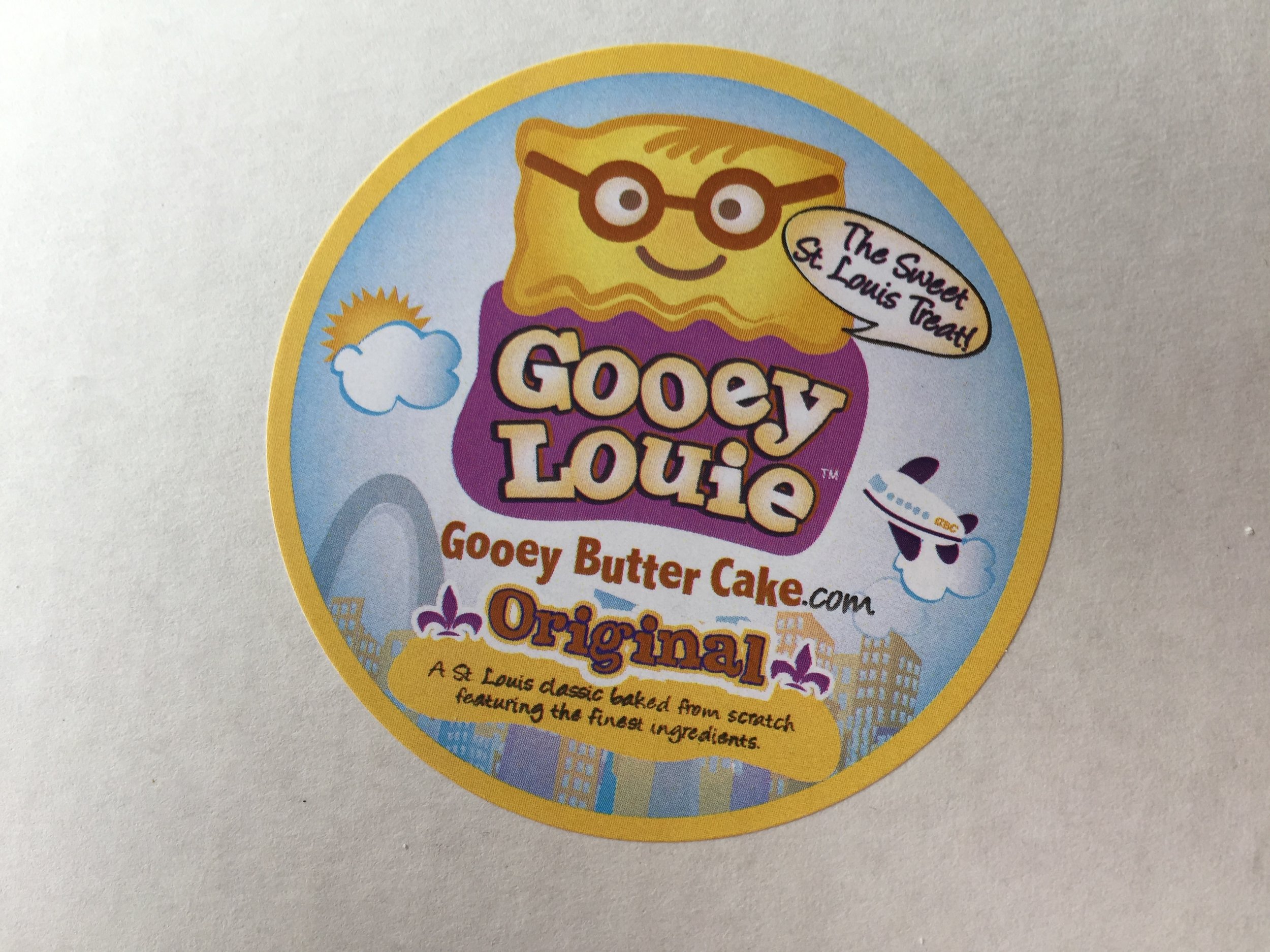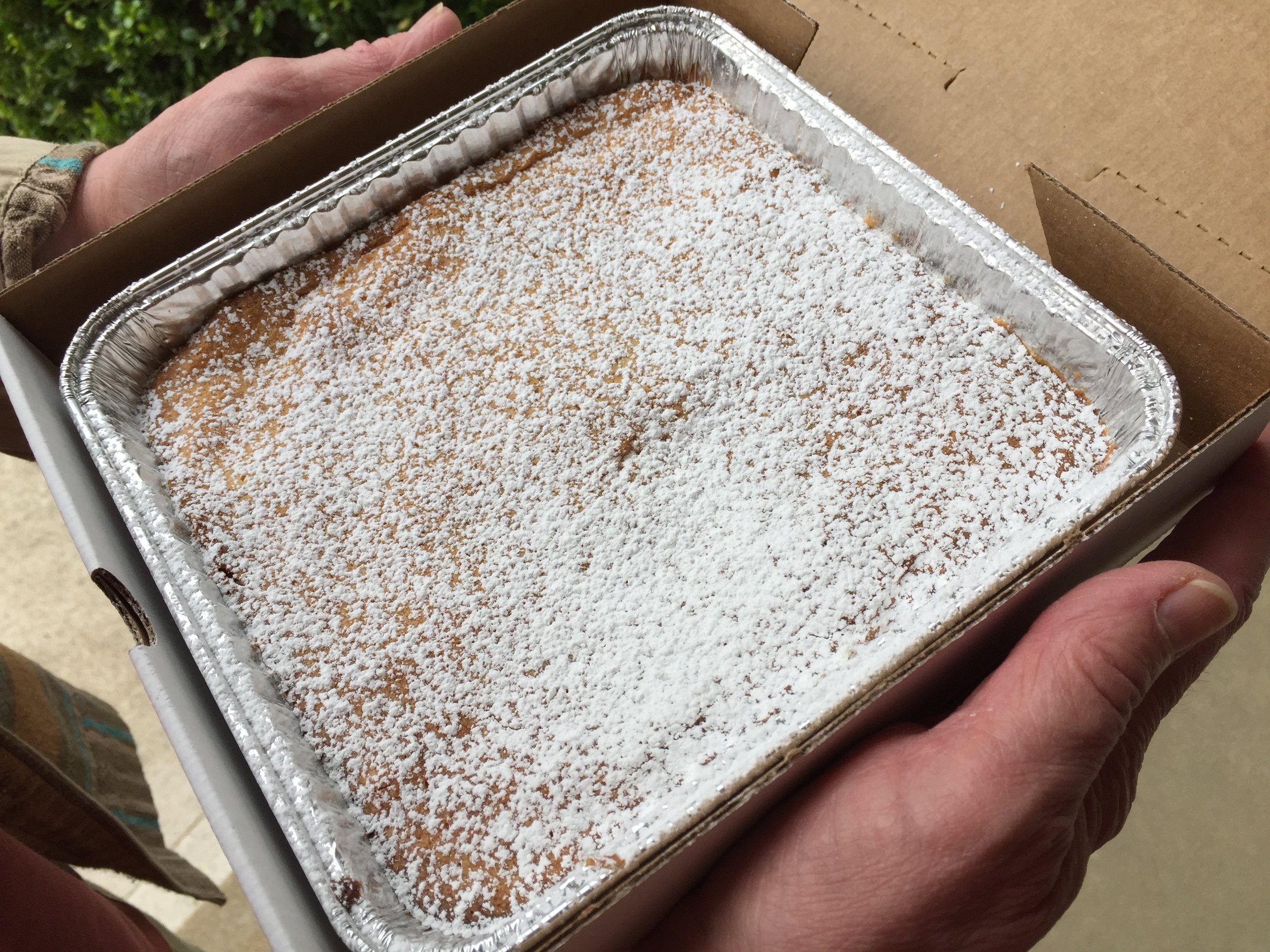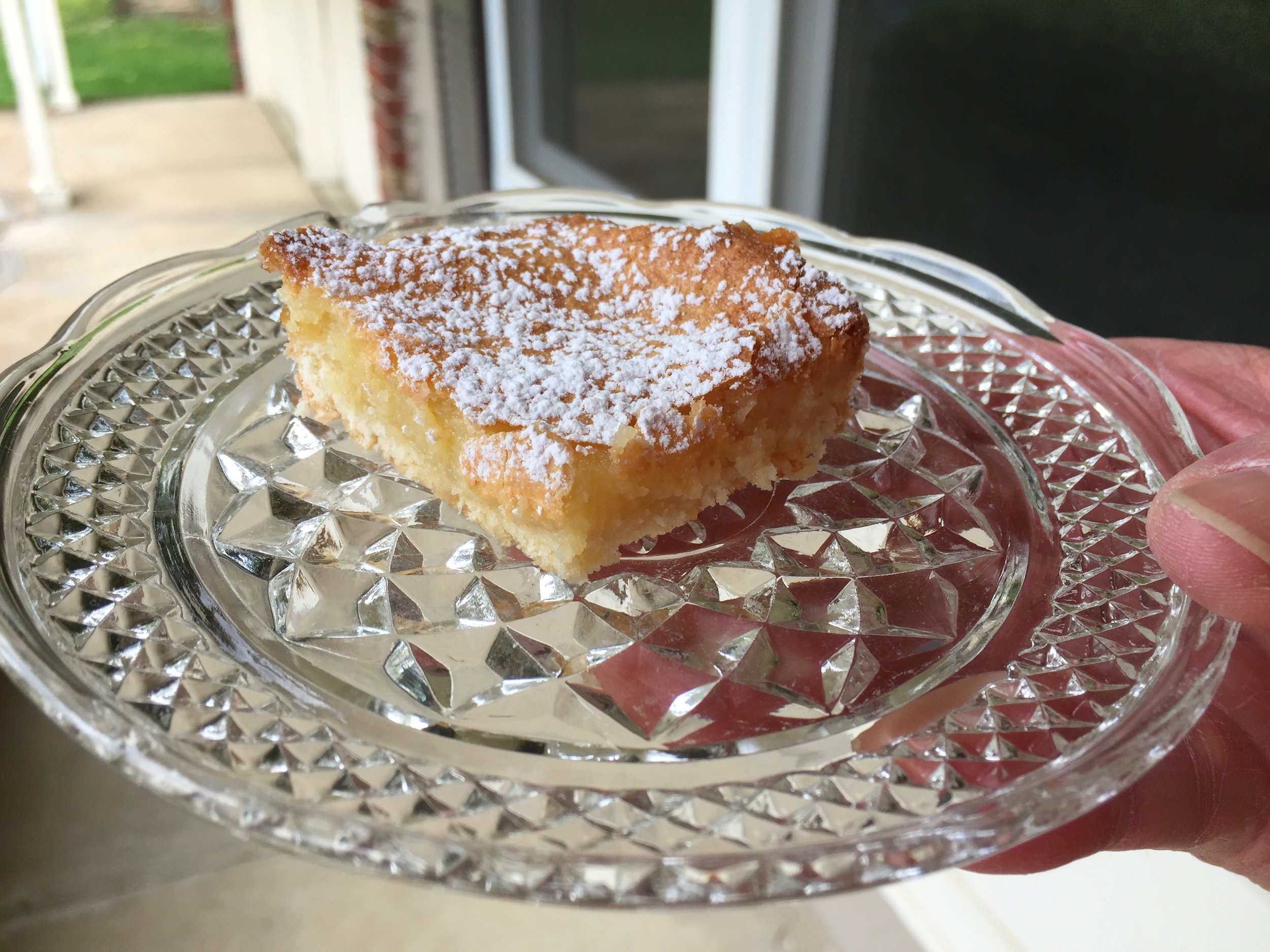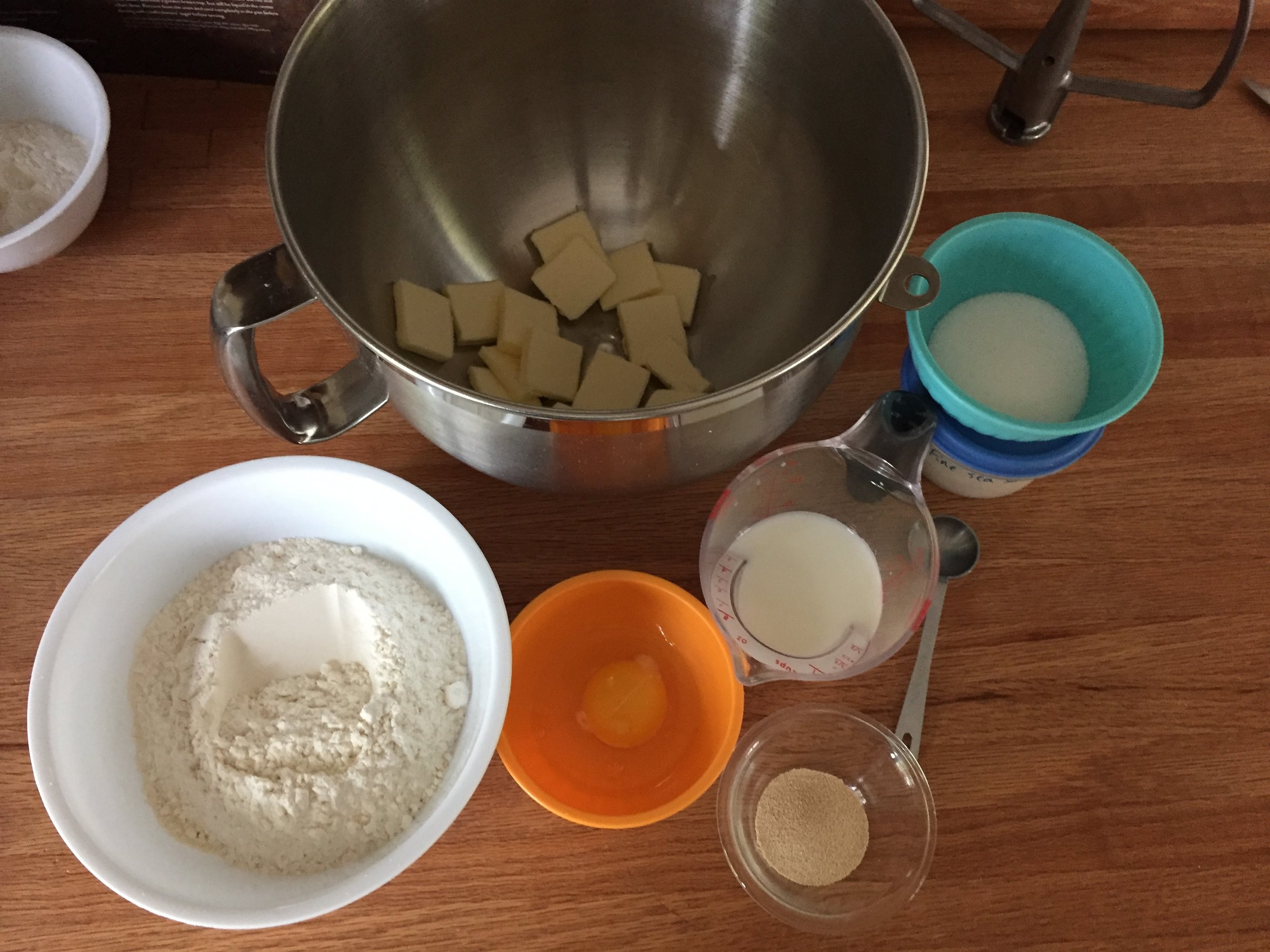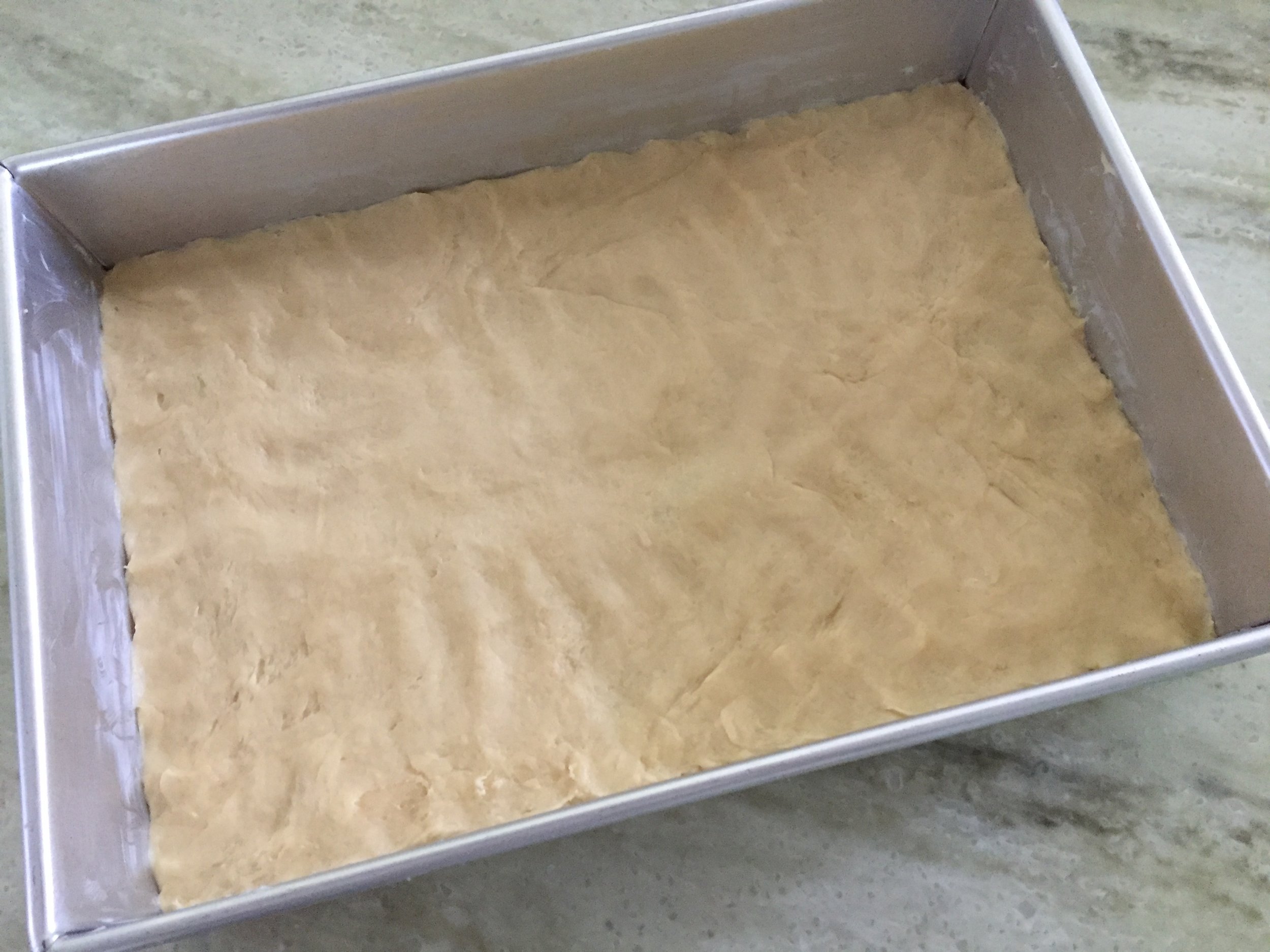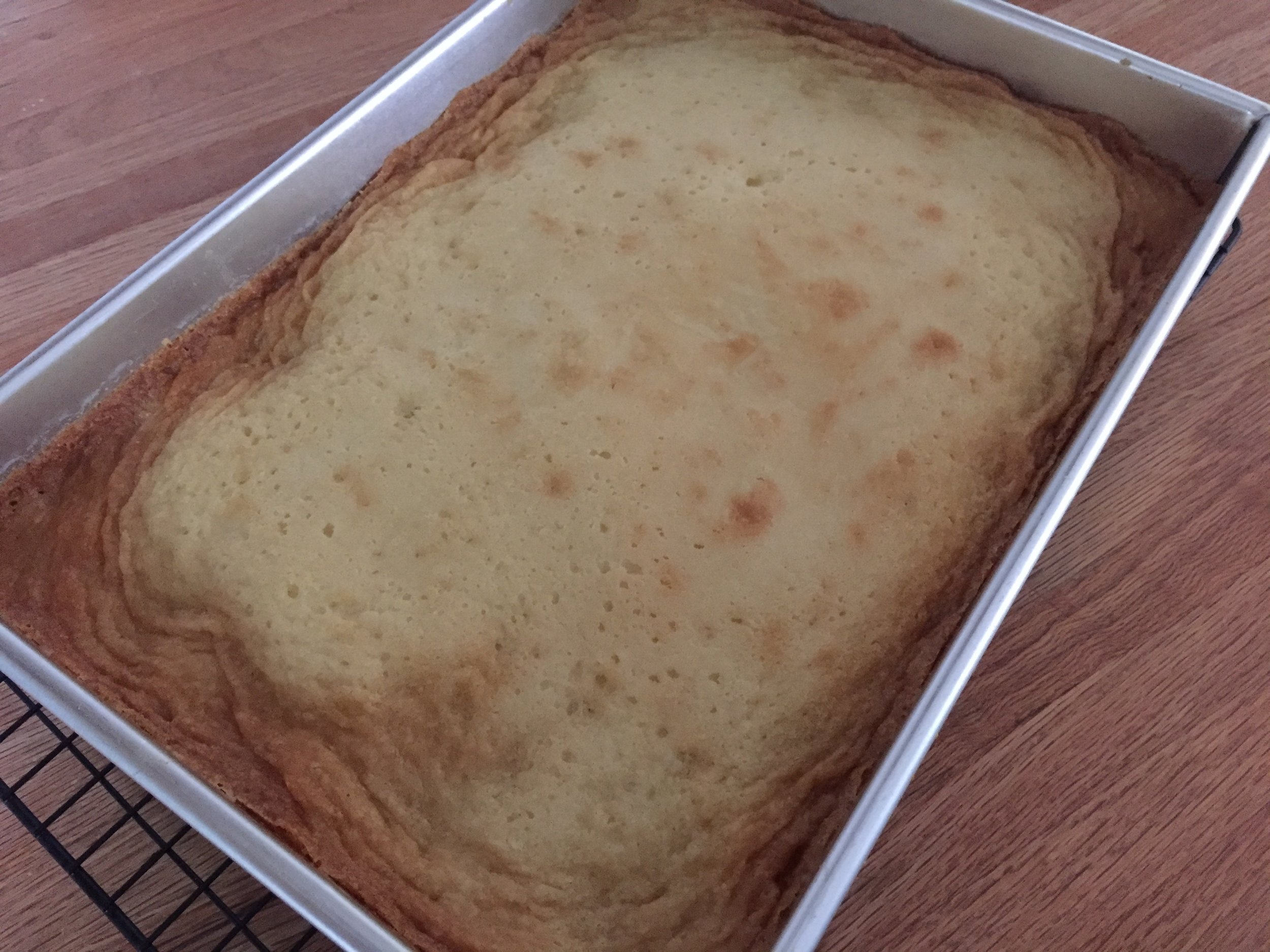St. Louis Gooey Butter Cake
/Steve and I recently returned from an extensive driving trip through the Midwest, South, Mid-Atlantic and finally upstate New York before driving back home to Michigan through Canada along Lake Ontario. It was quite a ride let me tell you!
Our first stop was St. Louis MO to visit cousin Melissa, her husband Jeff and son Matthew. Some months back I had become aware of one of the local St. Louis food specialties, the gooey butter cake, so of course we had to try it while we were in the neighborhood.
We were directed by our lunch spot server to one of the stalwarts of the gooey butter cake industry, Gooey Louis, a very unassuming storefront that, as it turns out, held magic inside. Fortunately we arrived in mid-afternoon just in time to snag the last available cake of the day. Yippee!
Sold in a simple 9”x9” foil pan not unlike something you might see at a church bake sale, it also sported a confectioner’s sugar dusted top. The shop saleswoman advised us that it would keep for 7 days, but offered the warning that it should NOT be refrigerated - we don’t want to disturb that “gooey” top layer now do we?
I was pleasantly surprised at the flavor and texture, fearing that it would be a sugary, gooey mess. Instead I found a vanilla scented, not overly sweet, tenderly textured square that reminded me of a simple lemon bar (without the lemon) with a shortbread like crust topped with a luscious, melt-in-your mouth filling. My oh my.
The story goes that a German baker in St. Louis accidentally mixed up the quantities of butter and flour in a basic yellow cake and thus the “gooey” was born. I wasn’t able to ask the Gooey Louis baker about his approach to the cake since he had already left the shop for the day. As is my usual practice I turned to some of my baking literature as well as the internet to try to learn a bit more.
I recalled a recipe from the Holiday 2017 issue of SIFT magazine, a King Arthur Flour publication, so turned to that initially. Interestingly it includes a yeasted “cake” base topped by the gooey filling. As I searched online I found a very similar recipe on SmittenKitchen’s blog which then referred me back to the recipe printed in the NYT by Melissa Clark in 2010. Melissa notes the recipe came from Molly Killeen, a St. Louis native with a baking business in Brooklyn. Obviously it’s been around awhile.
The other recipe most prominent on internet searching was a Paula Deen version made with a boxed cake mix and a topping that included cream cheese. Thanks but no thanks.
Now it was time to try my hand at making it myself. While this type of thing is a diversion from the usual French Tarte baking projects, I figured we had just visited a decent portion of the US of A so why not go with a regional American goodie for a change, eh?
For the base: combine 7 g instant yeast, 45 g room temperature whole milk and 30 g warm water in a small bowl. Set aside while you cream 85 g room temperature unsalted butter with 45 g granulated sugar and 3/4 teaspoon salt in a mixer fitted with the paddle attachment. Scrape down the bowl and blend in one large egg. Add 220 g all purpose flour alternating with the milk mixture, starting and ending with the flour. Then mix at medium speed for 4-5 minutes.
Press the dough into a greased 9” x 13” pan . . . . .
and let it rise for about 2.5 hours. The dough was a bit tacky but soft and supple, and it spread easily into a layer barely 1/4” thick.
During the rise I did the mise en place for the topping, mixing it together toward the end of the rise as I also heated my convection oven to 345ºF.
For the topping: whisk together 70 g light corn syrup, 30 g (2 TBSP) water and 2.5 teaspoons vanilla extract in a small bowl. In a mixer with the paddle attachment cream 170 g unsalted butter with 300 g granulated sugar and 1/2 teaspoon salt for several minutes until light and fluffy. Blend in one large egg then add 160 g all purpose flour alternating with the corn syrup mixture, starting and ending with the flour.
After the rise the base did indeed have a more pouffy look and had pretty much doubled in volume. The topping came together beautifully like a nice cake batter.
Dollop out the topping over the base . . . . .
then spread it out gently, smoothly and evenly.
Bake for 30-45 minutes (on the shorter side for a metal pan and the longer side for glass or ceramic). The cake rises and falls in a bit of a wavy pattern and the top should be golden brown but still liquid in the center. Mine had lovely browned, ripply and wrinkly edges, a moon crater like appearance and still gooey in the center. Be prepared: it has to cool completely in the pan before dusting with confectioner’s sugar, cutting and serving.
Steve and I did our initial taste testing by cutting some edge pieces - the bottom layer came out thicker than the cake we had in St. Louis, I’m sure as a result of the yeasted dough - and the topping a lovely buttery, not too sweet mixture. We liked it! The yeasted dough seemed almost bread like, as though we had slathered a wonderful slice with that delicious top layer
We had more the following day - still gooey and good! A 9x13 pan makes a lot so I’ll be doling out some portions to neighbors and co-workers lest Steve and I demolish it all ourselves.
Here’s to a delicious St. Louis treat!

